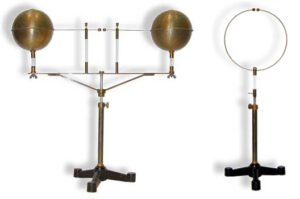Engineering and the development of new technologies are all about problem solving. Engineering involves applying scientific and mathematical knowledge to design and operate objects, systems, and processes to help us solve problems or reach goals. These processes often involve developing new technologies. Though we usually associate the word technology with things like microchips and satellites, in fact, the concept applies to a broad range of innovations. From the simplest of tools (like a chimpanzee’s termite fishing stick), to practical problem-solving (like adding fluoride to water to help prevent cavities), anything we make or do that changes the natural world for our own purposes counts as technology.

Engineering and the development of new technologies are closely tied to science. We use many technologies in scientific studies, and scientific knowledge helps engineers do their jobs and build new technologies. But is engineering the same thing as science? If you’re developing the next generation of handheld music players or a new fuel derived from corn plants are you doing science?
Use the Science Checklist to see how engineering is similar to and different from science:
![]() Focuses on the natural world?
Focuses on the natural world?
The natural world (in the scientific sense of the term) includes all components of the physical universe around us, including artificial, human-made things. Engineering does focus on the natural world, allowing us to, for example, shape raw materials into the components necessary to build a radio or design a more efficient process for separating medically useful plant compounds from toxic ones.
![]() Aims to explain the natural world?
Aims to explain the natural world?
As one might expect, engineering’s main focus is not on explanations but on applications. So while, for example, new scientific explanations of sound waves might be uncovered while developing a technology to carry sound over long distances, such explanations are not the central goal of engineering.

![]() Uses testable ideas?
Uses testable ideas?
Engineering is dependent on scientific knowledge, which is testable. In addition, a new technology can itself serve as a test of scientific ideas. For instance, the first antenna was developed as a test of basic ideas about how electricity and magnetism work. If the antenna had worked very differently than anticipated or had not worked at all, it could have prompted a re-examination of that basic knowledge.
![]() Relies on evidence?
Relies on evidence?
Generally, technological innovations are tested and evidence is collected to determine how effective the new tool is. Furthermore, engineers often rely on multiple rounds of testing, evidence collection, and design modification in order to optimize the performance of a new technology. For example, more than 20 years of evidence gathering went into the development of a safe and effective polio vaccine. Nevertheless, it’s important to note that, while science’s main focus is devising and performing multiple tests of ideas, engineering is concerned with testing mainly for its ability to advance the development of a technology.
![]() Involves the scientific community?
Involves the scientific community?
In many cases, the seed of a new technology is developed within the scientific community; other times this occurs as business-oriented research and development. While the business community often employs a collaborative work environment like that of science, it has a different emphasis (bringing products and services to market, as opposed to building knowledge), and so adheres to a different set of standards than does the scientific community. For example, the business community can be less oriented towards openly sharing ideas (e.g., proprietary information, like trade secrets) than the scientific community. However, it’s important to keep in mind that many scientists work in business communities and that many engineers work in scientific ones; so there is no hard and fast line here between scientists and engineers in this regard.

![]() Leads to ongoing research?
Leads to ongoing research?
Developing new technologies often, but not always, leads to ongoing research. This can happen in at least two ways. First, a new technology may inspire ongoing research to refine and improve the product. Just consider recent advances in electronics — from the bulky, simple transistors of the 1950s to the powerful microchips inside modern computers. Such innovation requires intense research. Second, new technologies can lead to advances in purely scientific research by making new data or analysis tools available. For example, the Hubble Space Telescope was a ground-breaking technological achievement. With it, astronomers could make deeper and more focused observations of the universe, which led to further research on topics like star formation and black holes.
![]() Researchers behave scientifically?
Researchers behave scientifically?
The development of new technologies can occur in different communities, and these communities may have different expectations of their members. Within the scientific community, the norms of science are upheld, but the same may not be true in other communities. For example, in general, scientists are expected to openly communicate test results to one another, but that may not be appropriate for an engineer employed to develop a particular technology for the market. In fact, for some applications in the business world, it may be standard practice to keep such information private so that others cannot develop competing technologies. However, it’s important to keep in mind that this is not a hard line between engineering and science; both engineers and scientists may work within and conform to the norms of multiple communities in different contexts.
Now it’s up to you. How is technology development similar to and different from science?
To see our answer, click here.
Scientific research and engineering are closely related. In fact, they are linked in a positive feedback loop. Science builds knowledge of how the natural world works, engineers use that knowledge to develop useful technologies, and these technologies may, in turn, provide key observations and tools that help scientists build even more knowledge of the natural world. Despite this close relationship, the two fields are distinct in that the main aim of engineering is applying scientific ideas in practical ways — not figuring out how the natural world works. Hence, those involved with each endeavor may adhere to different sets of norms that support their distinct goals.
